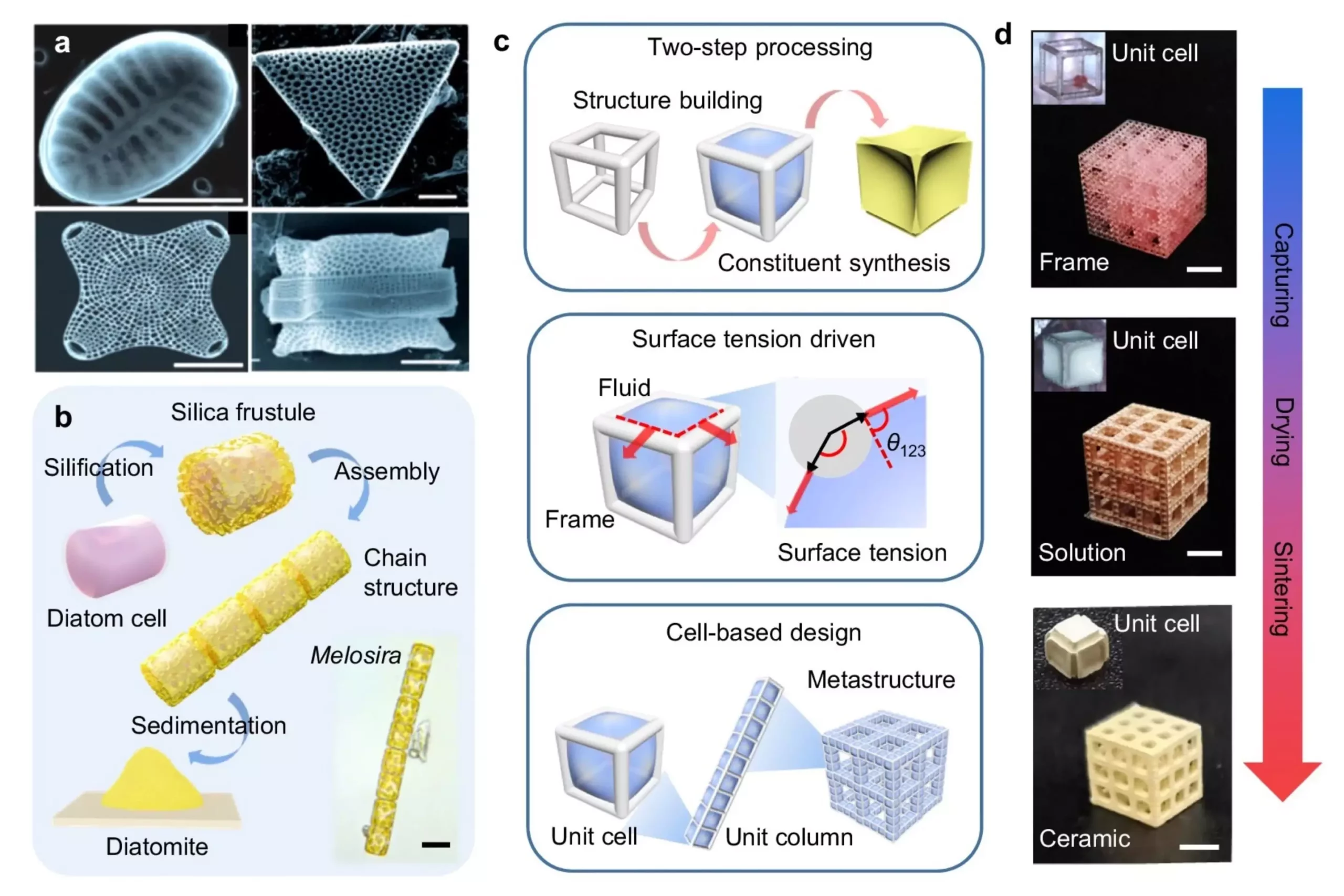The School of Engineering at the Hong Kong University of Science and Technology (HKUST) has introduced a groundbreaking method that aims to transform the way cellular ceramics are manufactured. This innovative approach not only simplifies the production process but also accelerates it, making it easier to create complex geometric structures. The study conducted by a team led by Associate Professor Yang Zhengbao focuses on revolutionizing the design and processing of various ceramic materials, leading to new possibilities in energy, electronics, and biomedicine.
The research team at HKUST developed a surface-tension-assisted two-step (STATS) processing strategy to fabricate cellular ceramics with programmed 3D cell-based configurations. This method involves two crucial steps: first, the preparation of cell-based organic lattices using additive manufacturing to create basic configurations, and second, filling the lattice with the required precursor solution. One of the main challenges faced during this process was controlling the liquid geometry. To overcome this obstacle, the team leveraged the natural phenomenon of surface tension to capture the precursor solution within the cellular lattices. This allowed them to control the liquid geometry effectively and produce cellular ceramics with high precision.
Using the STATS approach, the research team was able to separate ingredient synthesis from architecture building, enabling the programmable manufacturing of cellular ceramics with various cell sizes, densities, geometries, meta-structures, and constituent elements. This high level of programmability makes the method applicable to a wide range of ceramic materials, including both structural ceramics like Al2O3 and functional ceramics like TiO2, BiFeO3, and BaTiO3. Additionally, the team studied the piezoelectric performance of cellular piezoceramics and found that the new approach led to a decrease in micropores and improved local compactness in the sintered ceramics, resulting in a relatively high piezoelectric constant even with high overall porosity.
Professor Yang Zhengbao drew inspiration for this innovative method from diatoms, single-celled algae known for their precise and intricate silica frustules. These microscopic organisms undergo a genetically programmed biomineralization process that results in highly precise structures with diverse morphologies, shapes, geometries, pore distributions, and assemblies. By mimicking this natural process, the research team was able to overcome the limitations of traditional manufacturing methods and create programmable, geometrically complex ceramic architectures with a wide range of applications in various industries.
The development of the STATS approach by the team at HKUST represents a significant advancement in the field of cellular ceramics. This method not only simplifies and accelerates the production of complex ceramic structures but also offers a high level of programmability and versatility, making it suitable for a wide range of ceramic materials and applications. By drawing inspiration from nature and leveraging the principles of surface tension, this innovative approach has the potential to revolutionize the way ceramic materials are designed and processed, opening up new possibilities for advancements in energy, electronics, biomedicine, and beyond.


Leave a Reply